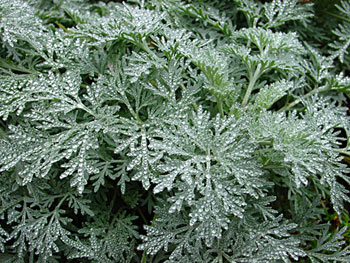This article by T. A. Breaux is part 1 of 4: The Pros and Cons of the Absinthe Revival
A Brief History

Absinthe – no spirit in history has been shrouded in more controversy, misunderstanding, and myth.
Having been unfairly blamed for a wealth of societal ills of the Belle Époque, the potent green spirit born in the late 1700s had virtually vanished by the early 1900s.
Following the temperance movement, two world wars, the cold war, and decades of social change, what was once the most lauded and hated spirit in existence had been reduced to a fairy tale that lingered in artistic and cultural circles.
The advent of the 1990s saw the beginning of resurgence in interest in the fabled spirit. However, the lengthy absence of absinthe from the global marketplace resulted in a void of knowledge that extended to producer and consumer alike.
Widespread misconceptions and consumer naïveté reduced the category to a niche novelty that created opportunities for abuse – most frequently manifested in cheaply made knockoffs of the spirit that offered little in the way of quality and tradition. Predictably, this led to a wave of inferior products and misinformation that threatened to kill the category as quickly as it was being revived.
More recently, a handful of craft distillers in Europe and the USA have responded to the rash of profiteering by rebooting the category with absinthes distilled true to tradition, which have provided a new spark of interest in the category.
What Exactly is Absinthe?

When an educated audience is queried on how Bourbon whiskey or London gin is made, there is no shortage of raised hands.
In contrast, asking how absinthe is traditionally crafted is the quickest way to draw a field of blank stares.
The reality is that understanding the basics of absinthe’s construction is as straightforward as understanding distilled gin. Absinthe is traditionally described throughout its existence as a direct redistillation of whole botanicals, which have been macerated in a base spirit.
By tradition these botanicals invariably included grande wormwood (A. absinthium), green anise (P. anisum), and sweet fennel (F. vulgare). The recovered distillate is then most often subjected to an infusion of select medicinal and culinary plants and spices that contribute an additional layer of flavor and aroma, as well as its traditional chlorophyllic green tint.
This is what is referred to by historical distillation guides as the Swiss Method, the original and most noble means of crafting absinthe. The vast majority of 19th century absinthes, including all of most lauded original brands, were crafted via this method.
At least 95% of global absinthe production in the 19th century originated from France and Switzerland, the vast majority of it being the verte (green) variety and bottled at a deceivingly potent 60-72% ABV. Never intended to be taken straight, the inviting aniseed perfume yielded by the gentle dilution with iced water seduced many a bon vivant and buveuse.
Why the Bad Reputation?

The origins of absinthe’s bad reputation are rooted in the fact that both the 19th century and the present day are plagued by a common problem, that being the absence of a proper legal definition to ensure minimum production standards and protect consumers.
Understanding the Swiss Method of absinthe crafting is to understand that considerable materials, labor, energy, and time are required to prepare the spirit in the traditional fashion. It also provides incentive to cheapen the product by taking shortcuts.
In the 19th century, these shortcuts often amounted to the use of potentially toxic adulterants to artificially induce a colour and flavor that was acceptable to the least demanding of imbibers. As a result, these poor alcoholics would commonly suffer from a range of systemic and nervous disorders, collectively coined as absinthism.
Not to sit idly, the wine and brandy industries, in the midst of recovery from the phylloxera plague, took advantage of the situation with a generously funded smear campaign. Likewise, the most respected absinthe distillers found their efforts to obtain a proper appellation thwarted by the omnipotent wine lobby.
This economically fueled political battle ensued for decades, whilst millions enjoyed quality absinthe on a regular basis without experiencing unusual effects to one’s health or sanity.
What modern science has revealed in more recently published studies is that absinthe’s reputation was unquestionably undeserved.
“The distillers of Bensaçon, Pontarlier, and Couvet hit on the idea of distilling the Absinthe herb (wormwood), adding annis [sic], fennel, and coriander seeds, etc., ad lib., these making an agreeable beverage. Absinthe so made soon had considerable success, which had the usual effect of bringing out the injurious trash made from oils, essences, etc.” –The Mixicologist, C. F. Lawler, 1895, USA.
Legalities – Then and Now
When absinthe was banned in Switzerland and France (1910 and 1915 respectively), that irreparably crippled availability on a global scale. The standardisation of food and beverage laws amongst the EU members in 1988 effectively relegalised absinthe in those EU countries where it had previously been banned. Curiously enough, years passed before this was openly recognised. The Swiss ban was finally repealed in 2005.
In the present day, the EU Codex defines four distinct categories for gin, including inexpensively compounded Gin, Juniper Flavored Spirits (e.g. Genever), Distilled Gin, and London Gin, the latter three of which demand direct redistillation by the producer, either in part or in entirety. In comparison, none exists for absinthe.
In the present day, only one country recognises a legal definition for absinthe and enforces minimum standards, that being Switzerland. The Swiss regulation so strictly adheres to tradition such that if it were applied to the EU marketplace, at least 75% of spirits being sold as absinthe would suddenly disappear. If anything casts a sobering perspective on the present state of the category, it’s this simple fact.
Industrial absinthes are prepared in exactly the same way as compounded gin, and originate from producers both large and small. The product is cold-mixed by simply adding herbal extracts, commercial flavorings, or steam distilled oils (e.g. aromatherapy oil) to alcohol.
This process was originally created to eliminate the necessity of handling whole herbs and possessing distillation equipment, and does not replicate the quality of the traditional distillation process any more than does compounded gin replicate the quality of distilled gin.
The issue in the realm of absinthe is that whereas the legal classifications of gin will almost always ensure that a compounded gin is labeled and priced accordingly, the absence of such criteria for absinthe makes it impossible for the average consumer to judge the quality of an absinthe based upon its labeling or shelf price. This is unfortunate for consumers, retailers, bartenders, and the category in general.
“Absinthes are obtained in two ways: by distillation and by essences; the last is always of inferior quality … It is hardly ever used except in low-class establishments…” – Le Liquoriste Moderne, A. Bedel, 1899, FRANCE.
Past Meets Future
Harry Craddock published The Savoy Cocktail Book in 1930, which quite possibly represents the most exhaustive compilation of classic libations ever published. This wonderful guide exhibits the Anglo-American departure from the traditional French service, and includes a respectable 104 different cocktails that call for absinthe.
Whereas many are quick to identify the traditional French absinthe glass and spoon, relatively few are aware of the important role absinthe played in the evolution of the fancy drink, beginning with its inclusion in the venerable Sazerac, widely recognised as the earliest proper cocktail. Absinthe holds a firm place in the iconic bar guides of the late 19th and early 20th centuries, such as Harry Johnson’s Bartender’s Manual, which makes no mention of modern bar staples, such as vodka and tequila.
“A third patient states that “when in my club a cocktail is ordered, the waiter inquires ‘with or without’: with or without absinthe.” – The Lancet, C.W.J. Brasher M.D., April 26, 1930, UK.
The last 15-20 years has borne witness to a culinary revolution that has graced our culture with far more interesting and diverse options then previously available at any other time in history. In its wake, we have seen the revival in classic cocktails that has followed and thrives similarly.
Given the present renaissance in classic cocktail mixology and the demands that has placed on product quality and historical accuracy, it has become apparent that only through the dissemination of truthful information and genuine products does absinthe stand a chance of being restored to the respectable position it once held as a sovereign spirit in every professional bartender’s arsenal.
The following parts to this article will be appearing soon:
- Part 2 – Absinthe, a Distiller’s Perspective
- Part 3 – How to Evaluate and Taste Absinthe
- Part 4 – Absinthe in Classic Mixology, and How to Use it Today

